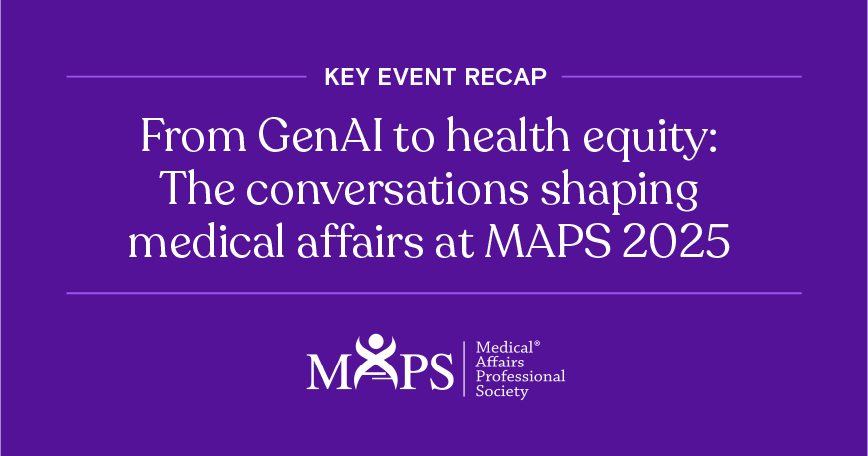For individuals living with rare diseases, orphan drugs can represent a lifeline. They offer the possibility of managing symptoms, improving quality of life, and potentially even curing the underlying condition. In some cases, these drugs are the only effective treatment available.
This lack of treatment options creates a significant unmet need for the estimated 30 million Americans living with a rare disease. For pharmaceutical companies, however, this represents a significant opportunity for growth and revenue generation. In this blog, we’ll explain what an orphan drug is and what pharma companies can do to find—and capitalize on—opportunities in the orphan drug market.
What is an orphan drug?
An orphan drug is a medication specifically designed to treat rare diseases. Orphan drugs are typically expensive and time-consuming to develop and are intended for niche patient populations.
Despite this, orphan drugs play a vital role in the treatment of rare diseases—without them, many people with these diseases would have no treatment options at all.
Identifying new opportunities in the orphan drug market
While the market may be niche, the potential for groundbreaking impact is immense. So, how can pharmaceutical companies find success in this unique space? Here are three key steps:
- Map out the orphan drug market
- Leverage market research and data
- Understand the regulatory landscape
Map out the orphan drug market
The orphan drug industry offers a unique set of opportunities and challenges for pharmaceutical companies. To navigate this space effectively, companies need a comprehensive understanding of the current landscape.
A crucial first step is to analyze existing treatments in the market. A great place to start is by reviewing published scientific research and clinical trial data to understand the drug’s mechanism of action, its efficacy, administration routes, and a wealth of other valuable insights your team can use to identify areas for improvement, pinpoint unmet medical needs, avoid pitfalls, and guide decision making.
Alongside a solid foundation of knowledge about rare diseases and existing treatments, it is sensible to complement your information gathering with expertise from rare disease specialists. These subject matter experts offer a deeper look into real-world treatment challenges related to the drug and can weigh in on the patient experience.
Finally, complete your map of the orphan drug landscape with a thorough competitive analysis. Investigate an existing orphan drug’s market share, pricing strategies, and limitations. This can reveal opportunities for differentiation by developing drugs with a more favorable side-effect profile, a more convenient dosing schedule, or a lower cost.
Leverage market research and data
You can use market research reports, databases, and medical and prescription claims data to determine patient populations for the rare disease(s) you’re interested in. Our webinar on leveraging commercial claims to find your ideal patient population is a good place to start.
From there, analyze the trends and mine the data for insights. A rare disease with a steadily growing patient population could indicate an unmet medical need or an opportunity for expansion of your orphan drug. This can justify the costly initial investment in development.
Smaller patient populations can also present lucrative opportunities. Rare diseases with no existing treatment options and diseases that significantly affect patient quality of life may translate to a higher willingness to pay a premium for life-changing treatment.
It’s also important to consider how attractive your orphan drug is to potential payors in the area. A treatment that can improve patient outcomes, reduce hospitalizations, or offer long-term cost savings could be enticing to payors even if the upfront cost is higher. In this case, demonstrating a clear value proposition is crucial. Read our how-to guide on positioning your pharma company for success in a crowded market for more information. Despite the guide’s name, it has tips and best practices for crafting a compelling value proposition pharmaceutical companies of any size can use.
Understand the regulatory landscape
Developing orphan drugs involves navigating a specific regulatory framework distinct from traditional drug development. To successfully bring your treatment to market in the shortest possible time, you’ll need to know the regulatory landscape like the back of your hand.
In 1983, the FDA passed the Orphan Drug Act (ODA). The goal was to encourage new drug development for rare diseases by providing incentives in the form of tax credits, grants, and market exclusivity. This means that a pharmaceutical company can sell the orphan drug without competition for a certain period (typically seven years), which helps them to recoup their investment in developing the drug.
The ODA is also a pathway by which treatments for rare diseases can apply for orphan drug status. This status, however, does not alter the standard regulatory requirements and process for obtaining market approval from the FDA. Consult the FDA for precise steps on requesting orphan drug designation. The database is also a great resource for finding other treatments that have successfully received orphan drug designation.
Learn more
By leveraging healthcare commercial intelligence, pharmaceutical companies can gain a comprehensive understanding of the orphan drug and rare disease market. This allows them to identify promising opportunities, strategically allocate resources, and ultimately bring life-changing treatments to patients while remaining commercially viable.
Looking for more information about the rare disease landscape or how to effectively bring your next treatment to market? Start a free trial with Definitive Healthcare today to learn about our solutions that can help you optimize every step of the commercialization process.





